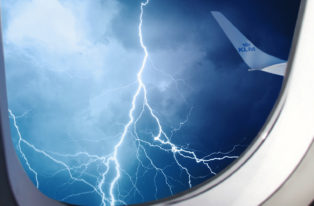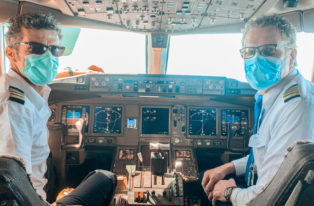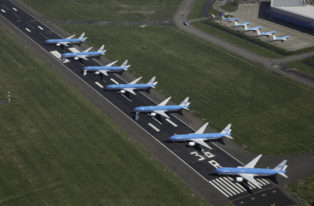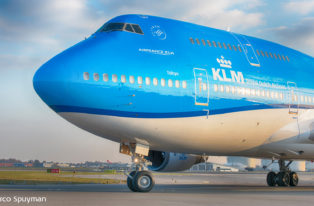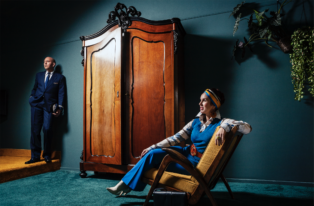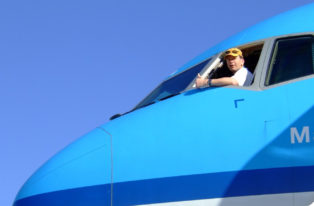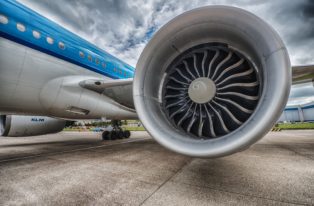Eight Questions for North Sea Jazz Festival Director Jan Willem Luyken
On 11, 12 and 13 July, the North Sea Jazz Festival – the world’s largest indoor music festival – will return to the Ahoy Rotterdam Arena. With just a few weeks to go before the start of the North Sea jazz Festival, we got the chance to put a few questions to the director, Jan Willem Luyken. Not an opportunity we could let pass!
The North Sea Jazz Festival has been around for almost forty years and has grown to be the world’s largest indoor jazz festival. What were the crucial moments in this development?
“The North Sea Jazz Festival began in 1976. It was created by Paul Acket, a successful businessman and jazz lover. He got the idea of opening multiple stages featuring simultaneous performances from a festival in the south of France. There, too, people could walk back and forth from stage to stage. He thought to himself, ‘We need something like that in the Netherlands’. Only, it would have to be indoors because of the uncertain weather here. He found a suitable location in The Hague Conference Centre, capable of holding nine stages in separate auditoriums. It could hold up to 9,000 people per day. The festival caught on quickly, became a success and, after just a few years, the centre was bursting out of its seams. In 1988, the conference centre added on a large concert hall, called the Statenhal. It allowed us to accommodate 25,000 visitors per day.
In 2001, The Hague Conference Centre was sold to a private project developer, who made numerous changes to the buildings. The larger concert halls were removed, making it impossible to hold the festival there anymore. It was 2006 that we moved to Rotterdam. The Ahoy Arena was the only complex in the Netherlands capable of holding a multi-stage concept of this kind. Many people were strongly opposed to moving the venue. The North Sea Jazz Festival belonged to The Hague and it was supposed to stay that way. But even the most vociferous opponents had to admit that the Ahoy—complete with thirteen auditoriums—was a much more comfortable location. Prior to the move, a survey showed that 91% of the general public were opposed to moving the festival to Rotterdam. Following the move, the exact same percentage were in favour of it.
It called for a lot of hard work on our part. In addition to its original purpose as a sport arena, the Ahoy is used for trade fairs and is not perfectly suited to holding concerts. All of that glass and steel is bad for the acoustics. We had to install acoustic walls made of sheep’s wool and make numerous changes to the decor. After that, however, it looked fantastic. We are about to hold the Festival in the Ahoy for the ninth year and, each year, we have to build up the whole thing and then break it down again at the end.”
Does the NSJF attract mainly Dutch visitors, or does it have more visitors from abroad?
“About 15% of the visitors come from abroad. The percentage used to be higher. However, since the euro grew in strength against the dollar, it has become more expensive for Americans to visit Europe. Most foreign visitors come from our neighbouring countries—Great Britain, Germany and Belgium. However, more and more are coming from Asia and we always have a contingent from North America.”
Is it difficult to bring in famous musicians from abroad?
“Musicians—among them some of the biggest names—seem to like coming to this festival. Everybody wants to have Stevie Wonder and Pharrel Williams. You have to really fight to get names like that. But artists who are starting out in their careers are dying to come here and we get our pick of the lot. So far, however, we have always managed to bring in lots of big names. We offer them suitable dates, we provide good production, and we pay well. We also collaborate closely with other festivals around Europe. We coordinate our dates so that the musicians can move easily from one festival to the next and make it easy for them to tour around Europe. In this way, they can continue on to Montreux, Ghent, the South of France, Vienna and Umbria. Ultimately, of course, it’s the musicians who get to choose. Nevertheless, we have a good reputation, lots of experience, we’ve been around for nearly forty years, and everything is always well organised. Mojo Concerts is our parent company and we’re happy about that. Musicians don’t like surprises. The dressing rooms, the acoustics, the stages, the transport—everything has to be top quality. We also get a lot of media coverage—radio, television, Internet—and they’re always happy about that. And, of course, we always have a great audience.”
Do the big jazz stars tend to make lots of strange demands?
“That’s not as bad as you might expect. Strange demands and comments are a thing of the past. These days, live tours are musicians’ main source of income. It used to be that they made their money from record sales. However, since the advent of music on the Internet, that source has dried up and they have to make their money giving concerts. So the live circuit has professionalised enormously in recent years.”
Who are the must-see musicians this year?
“Of course, Pharrel Williams is the man of the moment. As a producer, he is responsible for many number-one hits and he has broken every record with ‘Happy’. And, we’re very glad to have Stevie Wonder here this year. The underlying idea behind the festival is to book popular names that draw in large audiences who, in turn, then get to see many new musicians. We try to create a logical combination of pure entertainment and artistic depth. There will be 150 concerts in all—from small, intimate halls of two hundred people, where new bands and musicians can perform, to mega-halls for more than 10,000 people.”
Who will be the greatest surprise this year?
“It’s always difficult to say in advance. In some cases, you expect a lot more of a certain musician and then another artist goes on to drive the audience crazy. Last year, a real highlight turned out to be Snarky Puppy, an exceptional band made up of young people, all of whom are professional band musicians. They are all in other bands, for instance, for Erykah Badu or Jill Scott. In 2004, they set up their own band and they play everything from soul to jazz to film music. Their performance is virtuosic and it was a real surprise last year. They are coming back again this year and they’ll have a bigger hall to play in this time.”
Does the North Sea Jazz Festival have any ambitions for the future?
“We are limited to 25,000 visitors per day. That’s our absolute limit. We can’t grow any further. There’s no room for that. This year, we plan to celebrate our anniversary in Curaçao. The NSJF will celebrate its fifth year, there. In November, we’ll open in Hong Kong. I’m really looking forward to that. Hong Kong is the New York City of Asia. It’s the place to be! You can sense the need for festivals, there. It seems like the perfect time to start, there. We will operate there with a local partner. We have licensed our name and we will manage and produce the festival. We will also book all of the artists.”
Have you learned anything from your experience in Curaçao?
“We’ve learned a lot! Every country has its own challenges. Curaçao does not have the infrastructure, hardware or equipment that we’re used to having in the Netherlands. Every year, we have to transport containers full of equipment for the lighting and decor, and tons of people from Mojo Concerts. Hong Kong is another story entirely. There you have more than enough production, lighting and sound companies. But Hong Kong has its own challenges. What strikes me each time is how very different the musical preferences are, there. Artists who have dropped in popularity here can go on for years in Asia. And, in Latin America, the stadiums are filled with artists whom we’ve never even heard of. Every continent has its own preferences. So there’s always something new to discover. That’s what jazz is all about!”
You can go to the North Sea Jazz Festival with KLM if you take part in a contest which could win you tickets for two to the festival. These tickets are including transport to and from the venue, four nights in a hotel, and much more. For details about the contest, click here.

